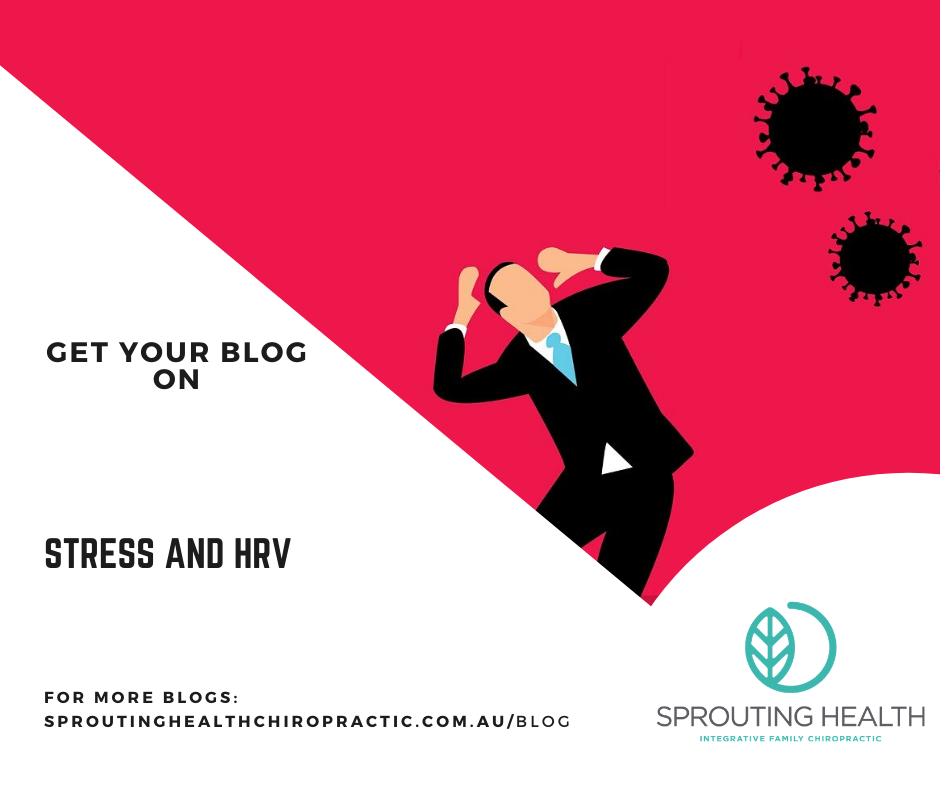|
In these uncertain times, we are all exposed to extra stress at the moment. Stress from not knowing what tomorrow will bring, will I have a job, will someone I know get sick. We are often asked how we, as chiropractors are able to help with stress, and this is an interesting question; especially at the moment. To answer this question, we are going to look at the impact of the chiropractic adjustment (spinal manipulation) on heart rate variability (HRV). HRV simply put, will measure the intervals between heart beats, and give us information about our sympathetic (fight or flight) and parasympathetic (rest & digest) nervous systems. (1) We need a good balance between theses system for a healthy response. A low variability is associated with increased risk for chronic disease. (2) When we are stressed, our nervous system goes into a sympathetic dominance which can lead to an increase in our heart rate, increased muscle tone (especially in the neck), but decreases our ability to concentrate. (3, 4) But back to the main question at hand, how can a chiropractor help me and my body with stress? Well, there have been a number of studies looking into how adjustments to the spine can influence the autonomic nervous system (parasympathetics and sympathetics). They suggest that adjustments to the neck (cervical spine) and low back (lumbar spine) will increase our parasympathetic response, which in turn will help manage that stress induced sympathetic response. (5-8) So, if you, or someone you know is struggling with their stress levels, please give our office a call to see if we can help you manage your stress. We can also provide you with exercise and lifestyle advice to help you manage your condition. References 1. Win, N. N., Jorgensen, A. M. S., Chen, Y. S., & Haneline, M. T. (2015). Effects of upper and lower cervical spinal manipulative therapy on blood pressure and heart rate variability in volunteers and patients with neck pain: a randomized controlled, cross-over, preliminary study. Journal of chiropractic medicine, 14(1), 1-9. 2. Thayer, J. F., Åhs, F., Fredrikson, M., Sollers III, J. J., & Wager, T. D. (2012). A meta-analysis of heart rate variability and neuroimaging studies: implications for heart rate variability as a marker of stress and health. Neuroscience & Biobehavioral Reviews, 36(2), 747-756. 3. Taelman, J., Vandeput, S., Spaepen, A., & Van Huffel, S. (2009). Influence of mental stress on heart rate and heart rate variability. In 4th European conference of the international federation for medical and biological engineering (pp. 1366-1369). Springer, Berlin, Heidelberg. 4. Hjortskov, N., Rissén, D., Blangsted, A. K., Fallentin, N., Lundberg, U., & Søgaard, K. (2004). The effect of mental stress on heart rate variability and blood pressure during computer work. European journal of applied physiology, 92(1-2), 84-89. 5. Borges, B. L. A., Bortolazzo, G. L., & Neto, H. P. (2018). Effects of spinal manipulation and myofascial techniques on heart rate variability: a systematic review. Journal of bodywork and movement therapies, 22(1), 203-208. 6. Roy, R. A., Boucher, J. P., & Comtois, A. S. (2009). Heart rate variability modulation after manipulation in pain-free patients vs patients in pain. Journal of manipulative and physiological therapeutics, 32(4), 277-286. 7. Giles, P. D., Hensel, K. L., Pacchia, C. F., & Smith, M. L. (2013). Suboccipital decompression enhances heart rate variability indices of cardiac control in healthy subjects. The Journal of Alternative and Complementary Medicine, 19(2), 92-96. 8. Shafiq, H., McGregor, C., & Murphy, B. (2014, August). The impact of cervical manipulation on heart rate variability. In 2014 36th Annual International Conference of the IEEE Engineering in Medicine and Biology Society (pp. 3406-3409). IEEE.
0 Comments
Leave a Reply. |
AuthorBlogs by the team at Sprouting Health Archives
July 2024
Categories |


 RSS Feed
RSS Feed
